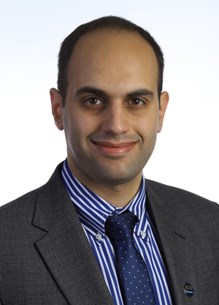Meeting
2016 Cancer Survivorship Symposium

Indiana University School of Medicine, Indianapolis, IN
Mohammad Issam Abu Zaid , Chunkit Fung , AnnaLynn Williams , Howard D. Sesso , Sarah L Kerns , Darren R. Feldman , Robert James Hamilton , David J. Vaughn , Clair Beard , Hai Liu , Sophie D. Fossa , Lawrence H. Einhorn , Lois B. Travis
Background: TCS are at increased risk of CVD, but few clinical studies have comprehensively evaluated CVD risk factors through physical exams, lipid panels, and health behaviors in North American patients. Methods: Eligible TCS were < 50 y at diagnosis and treated with only first line CHEM. TCS underwent physical exams, had fasting lipid panels, and completed questionnaires regarding co-morbidities and health behaviors. Age, race, and educational status-matched controls (1:1) were chosen from the general population using the 2011-2012 National Health and Nutrition Examination Survey. Odds ratios (OR) of outcomes among TCS versus matched controls were estimated using logistic regression models. Results: We evaluated 680 consecutively enrolled TCS. Median age at diagnosis was 31 y (range, 15-49) and at clinical evaluation 38 y (range, 19-68). Median time since CHEM was 4.3 y (range, 1-30). Compared to normative controls, TCS were more likely to be overweight (OR = 1.65; 95% CI 1.26-2.16), have total cholesterol ≥ 240 mg/dL (OR = 2.19; 95% CI 1.12-4.28) and LDL ≥ 160 mg/dL (OR = 3.05; 95% CI 1.03-9.00), and report alcohol use > 2 days/week (OR = 2.13; 95% CI 1.64-2.77). In contrast, they were more likely to have a waist circumference < 40 inches (OR = 1.32; 95% CI 1.04-1.66); engage in vigorous (OR = 2.64; 95% CI 2.11-3.29) or moderate (OR = 1.62; 95% CI 1.30-2.03) physical activity, and not smoke (OR = 2.95; 95% CI 2.14-4.08). TCS were about 3 times more likely overall to report excellent, very good, or good health compared to controls (P < 0.05). No significant differences were found comparing HDL, triglycerides, or self-reported hypertension (P > 0.05). Conclusions: Although North American TCS appear more likely to exercise and abstain from smoking compared to normative controls, a greater proportion are overweight and have higher fasting total cholesterol and LDL levels. Health care providers should screen TCS for CVD risk factors, and encourage practices consistent with a healthy lifestyle. Future research should elucidate mechanisms of increased CVD risk and ultimately develop customized prevention and intervention strategies.
Disclaimer
This material on this page is ©2024 American Society of Clinical Oncology, all rights reserved. Licensing available upon request. For more information, please contact licensing@asco.org
2016 Cancer Survivorship Symposium
Poster Session
Poster Session B
Care Coordination and Financial Implications,Communication,Late- and Long-term Effects/Comorbidities,Health Promotion,Psychosocial Issues,Recurrence and Secondary Malignancies
Long-term Complications/Sequelae of Treatment (Noncancer)
J Clin Oncol 34, 2016 (suppl 3S; abstr 129)
10.1200/jco.2016.34.3_suppl.129
129
D5
Abstract Disclosures
2022 ASCO Annual Meeting
First Author: Sjoukje Lubberts
2021 ASCO Annual Meeting
First Author: Shirin Ardeshirrouhanifard
2024 ASCO Gastrointestinal Cancers Symposium
First Author: Hendrik-Tobias Arkenau
2016 ASCO Annual Meeting
First Author: Mohammad Issam Abu Zaid